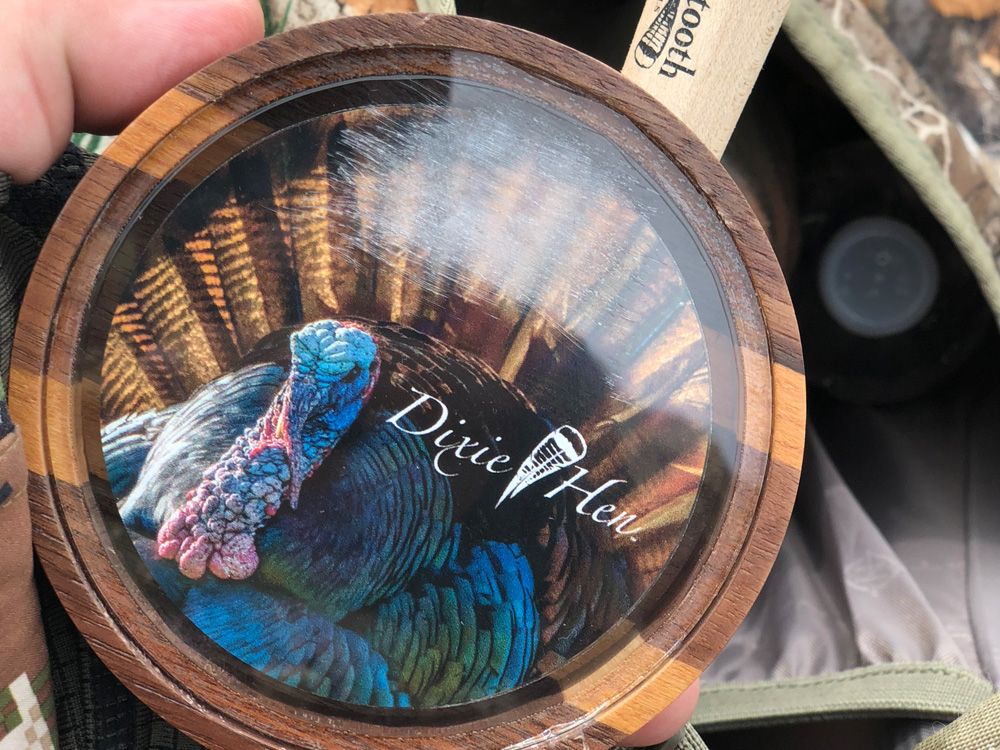Turkey hunting is a gear-rich sport with many choices in calls, decoys, turkey vests, chairs, and other equipment. Of all the stuff you can bring out on a hunt, turkey calls offer an especially daunting amount of variety.
Turkey calls fall, broadly, into two categories: Mouth calls, which you blow into, and friction calls, which create sound when you rub two surfaces together. From there, they break down into a wider array of designs, including Diaphragm and trumpet (aka wingbone) mouth calls, or slate/pot calls and box-style friction calls. Ask any turkey hunter how many calls they carry in their turkey vest (let alone own), and the answer will probably be “too many!”
Whether you master one or both styles in your hunting pursuits, many brands offer a variety of turkey hunting calls, from mass-produced to custom hand-turned models. The best calls can endure the physical harshness of hunting and emit realistic sounds for many seasons.
More Hunting Essentials: Best Hunting Jackets • Best Hunting Pants • Best Ground Blinds • Best Duck Hunting Waders • Best Turkey Vests
Best Turkey Calls
The Expert:
How to Pick The Right Turkey Calls For Your Next Hunt
The most important consideration when choosing a turkey call is its ability to mimic authentic sounds at various volume levels. Although the calls in each category physically work the same way, each one feels and sounds differently. Most hunters try a few before settling on the one that fits and sounds the best.
Manufacturers offer diaphragm calls with single or multiple reeds, pot calls made of different materials including metals, and box calls made of a variety of woods and thickness, which allows each to possess its own audible pitch. When turkey hunting, carry a variety of your favorite mouth calls since they are small and easy to pack in a turkey vest.
Include a pot call (or two), with a few strikers capable of emitting mellow and sharp sounds. Box calls are great for sounds you want heard at a distance and used to entice those hung up toms. Having a variety of sounds can help you lure wary or stubborn toms when one won’t work on its own. Ultimately, it does not matter which calls you carry as long as you use them effectively.
Diaphragm (Mouth) Calls
Diaphragm calls, which many refer to as mouth calls, are the least expensive and most popular turkey call. They’re a favorite among turkey hunters because they allow you to keep your hands free, so you can use the call right to the last moment.
Diaphragm calls consist of three main parts-the frame, a reed, and tape. A layer of prophylactic or latex material is stretched between an aluminum frame, which is folded over the latex to create a horseshoe shape. The excess latex on the outer edge is trimmed off, and the whole piece is wrapped in a special tape that can be custom trimmed to fit your mouth.
Because a diaphragm call requires control to use it effectively-with the amount of pressure you use to press the call against the roof of your mouth and the volume of air you push through it to produce different tones—it is the most challenging type of call to master.
Slate/Pot Calls
A slate or “pot” call is a friction-type design that uses a peg-style striker to create different sounds. Slate calls are usually round and made of various wood, composite, or plastic, with a striking surface made from slate, ceramic, glass, aluminum, or copper.
The friction makes sounds by dragging the striker across the surface in varying pressures and patterns. Keeping the call’s surface free of dust, water, and oils from your fingers is essential. To obtain the best sounds, it’s vital to periodically condition the call’s resonating surface and the striker’s tip, usually with sandpaper or a conditioning stone, depending on the surface. (This guide is a great reference).
Slate calls are easier to use than diaphragm calls, but they require more upper-body movement and the use of both hands, making them more limited in the field. They’re also more expensive, but with various materials available, you will likely find one within your budget.

Box Calls
Another friction-style design, box call works by sliding a hinged wooden lid across a wooden box. A paddle-style striker slides across the edges of a resonating box to produce turkey sounds. This type of call is easy to use, but more challenging to carry in the field. It’s difficult to be discreet when using a box call, as you need both hands and more upper-body movement to operate it.
Locator Calls
The locator call isn’t meant to lure a turkey. Instead, it makes the turkey think there’s an owl, crow, blue jay, or even another turkey nearby. Hearing another bird will (hopefully) prompt a shock gobble, which you can use to track them down. Be careful not to use a predator call that will cause the turkey to fly down or move away from your area.
Wingbone/Trumpet Calls
The trumpet or “wingbone” call has become increasingly popular over the past few years. Nicknamed “wingbone” because the first versions were made from a turkey’s wing bone, pursing your lip on the small end of this mouth call and sucking shortly creates a vibrato sound through the piece.
Trumpet calls require dedication and a keen sense of turkey language, so only seasoned hunters use them regularly. Given that it requires a lot of time and skill to use, I decided not to recommend a wingbone call in this guide. That doesn’t mean you shouldn’t consider using one if you’re willing to put in the time to master it.











































